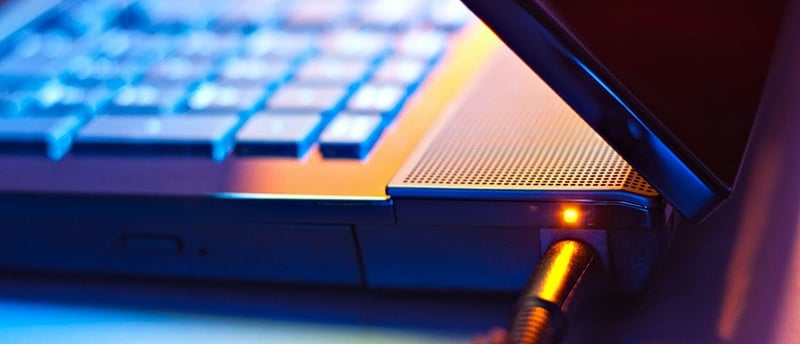Things to Know When Using a Laptop While Charging
NEWS
9/18/20242 min read


To avoid interruptions during work, many people often use their laptops while charging. If you have this habit, make sure to keep the following tips in mind.
Most modern laptops today use Li-ion or Li-Po batteries, allowing users to comfortably charge and use the device at the same time. However, to avoid overheating and protect the battery, users should take note of the following precautions:
1. Plug in the Charger Correctly
Unlike other electronic devices, a laptop battery can degrade quickly if not charged and used properly. One of the key measures to extend the battery life is to follow the correct charging sequence. You should plug the power adapter into the electrical outlet first, then connect the charger to the laptop.
This is essential because the adapter has a voltage stabilizer that helps regulate the electrical current, ensuring greater safety for the device. Moreover, when the charger is not yet connected to the laptop, there is no output, which reduces the occurrence of arcing, better protecting the battery.
2. Charge in a Dry, Well-Ventilated Place
Be mindful of the charging environment for your laptop, avoiding humid areas or places with high temperatures that can increase the risk of fire or explosion.
When charging and using the laptop simultaneously, choose dry, well-ventilated locations such as a desk or a hard flat surface to allow better heat dissipation. Charging in these environments not only extends battery life but also protects the laptop from unnecessary risks.
3. Don’t Use the Laptop on a Bed, Pillow, or Blanket
Using your laptop on bedding, pillows, or blankets can obstruct heat dissipation, leading to reduced performance. When the cooling system is hindered, the laptop may become damaged and its lifespan shortened. Elevating the cooling vents above the surface of the table or using a cooling pad can ensure the battery stays cool.
4. Plug in the Charger When the Battery is Low
Avoid letting your laptop run out of battery or charging it when it drops below 5%, as this can harm the battery. Instead, plug in the charger when you receive a notification or when the battery level is around 10%.
Additionally, during laptop use, avoid letting the battery drain completely before recharging. Repeating this can significantly speed up battery degradation. The ideal battery level to charge is between 10-20%, which helps maintain performance and extend the laptop’s battery life.
5. Clean the Laptop Regularly
To prevent dirt from accumulating between the charger plug and port, which can cause unstable charging, it is important to clean your laptop regularly. This not only protects the battery but also improves charging efficiency.
Using a compressed air tool to remove dust ensures better contact between the battery and laptop, while also cleaning the keyboard. Additionally, applying thermal paste can help improve temperature regulation, keeping the laptop running smoothly.
6. Use the Original Charging Cable
Using a third-party charger may not guarantee the same quality for both the battery and the laptop. Incompatible chargers can damage the battery or even cause a fire due to mismatched power sources.
Each laptop comes with a charger that has specific technical specifications. If users ignore this and use a charger with different performance, the risk of short circuits and damage to the laptop is very high.
Therefore, make sure to use a charger with the correct specifications. The best solution is to visit authorized service centers to find a compatible charger for your laptop.
